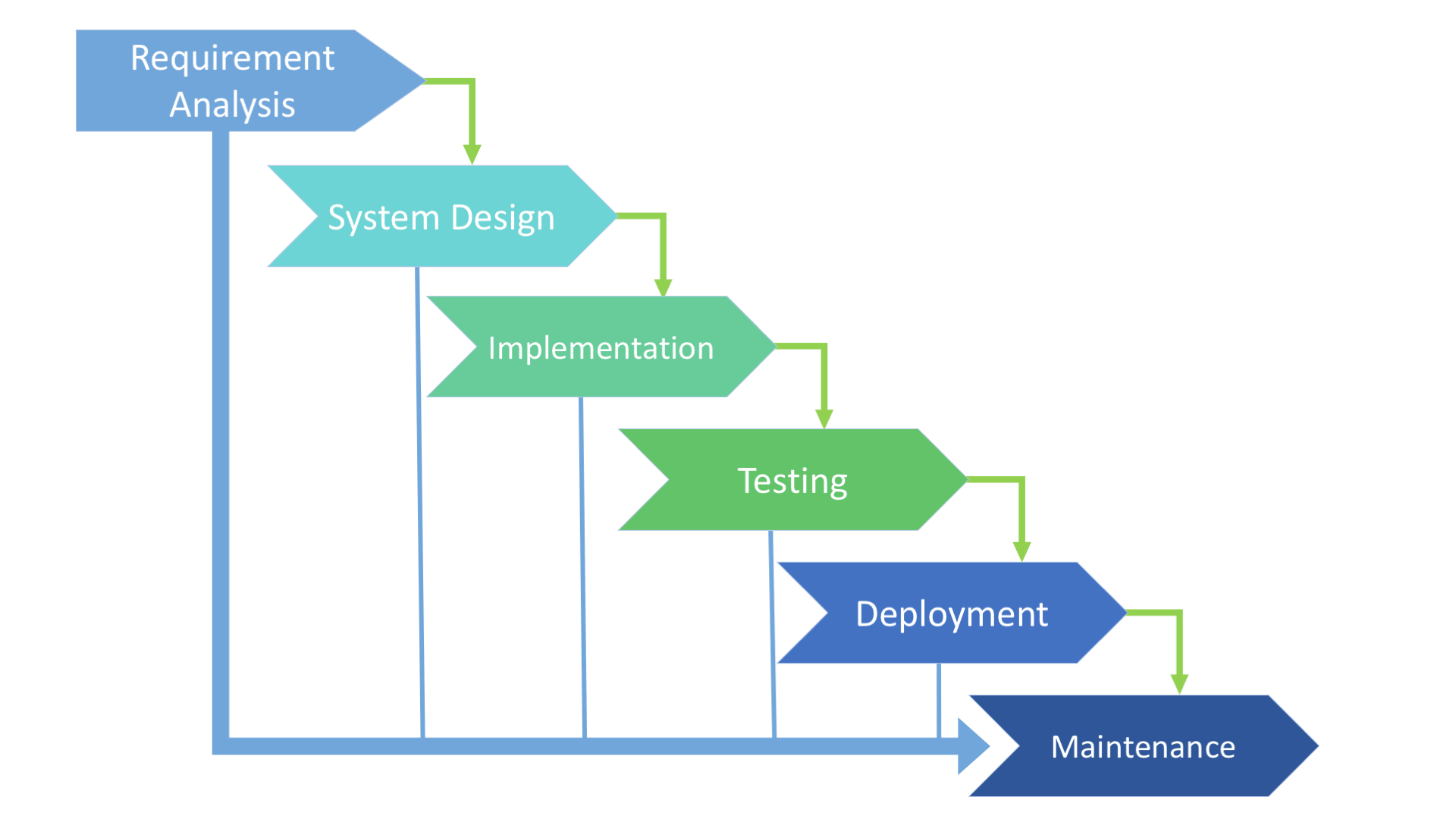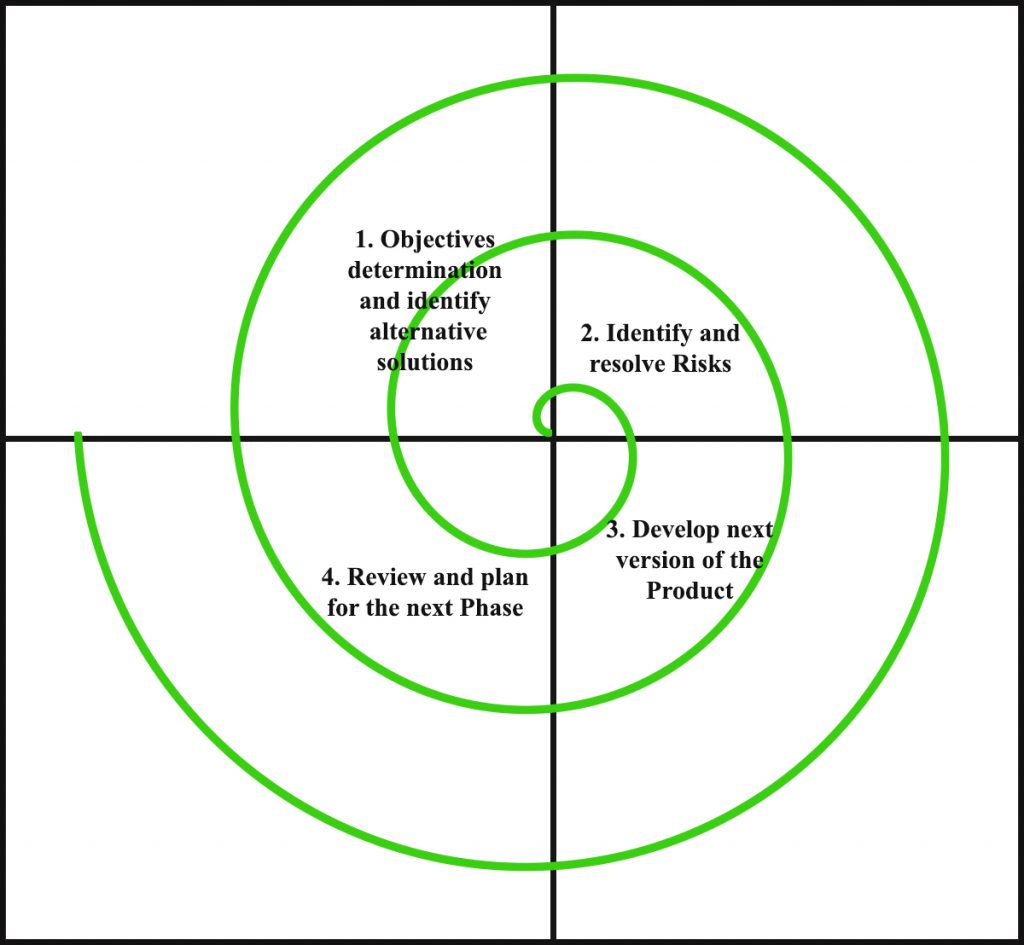Software Engineering - Old Questions
2. What are the major phases in the waterfall model and spiral model ? Explain.
The waterfall model is a sequential approach, where each fundamental activity of a process represented as a separate phase, arranged in linear order. Each phase is carried out completely (for all requirements) before proceeding to the next. The process is strictly sequential - no backing up or repeating phases. This SDLC model includes gradual execution of every stage completely. This process is strictly documented and predefined with features expected to every phase of this SDLC model.

Fig: The waterfall model
The sequential phases in Waterfall model are −
1. Requirement Gathering and analysis − All possible requirements of the system to be developed are captured in this phase and documented in a requirement specification document.
2. System Design − The requirement specifications from first phase are studied in this phase and the system design is prepared. This system design helps in specifying hardware and system requirements and helps in defining the overall system architecture.
3. Implementation − With inputs from the system design, the system is first developed in small programs called units, which are integrated in the next phase. Each unit is developed and tested for its functionality, which is referred to as Unit Testing.
4. Integration and Testing − All the units developed in the implementation phase are integrated into a system after testing of each unit. Post integration the entire system is tested for any faults and failures.
5. Deployment of system − Once the functional and non-functional testing is done; the product is deployed in the customer environment or released into the market.
6. Maintenance − There are some issues which come up in the client environment. To fix those issues, patches are released. Also to enhance the product some better versions are released. Maintenance is done to deliver these changes in the customer environment
Spiral Model is a risk-driven software development process model. It is a combination of waterfall model and iterative model. Spiral Model helps to adopt software development elements of multiple process models for the software project based on unique risk patterns ensuring efficient development process.
In spiral model, total software development process activities are divided into four groups as shown in figure below:

- Objectives determination and identify alternative solutions: Requirements are gathered from the customers and the objectives are identified, elaborated, and analyzed at the start of every phase. Then alternative solutions possible for the phase are proposed in this quadrant.
- Identify and resolve Risks: During the second quadrant, all the possible solutions are evaluated to select the best possible solution. Then the risks associated with that solution are identified and the risks are resolved using the best possible strategy. At the end of this quadrant, the Prototype is built for the best possible solution.
- Develop next version of the Product: During the third quadrant, the identified features are developed and verified through testing. At the end of the third quadrant, the next version of the software is available.
- Review and plan for the next Phase: In the fourth quadrant, the Customers evaluate the so far developed version of the software. In the end, planning for the next phase is started.